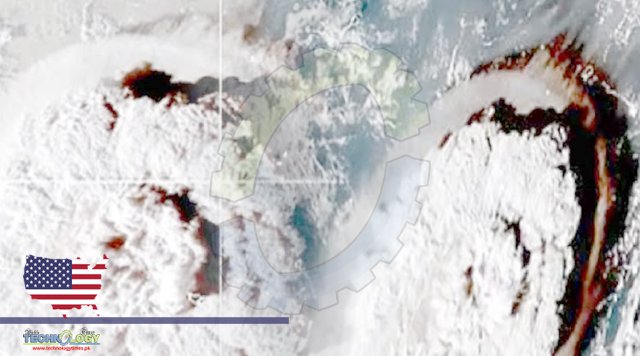The massive eruption of a Tongan volcano this year released a record amount of water into the Earth’s atmosphere, enough to temporarily warm the globe,

NASA scientists say. The January 15 eruption of the Hunga Tonga’s Hunga Ha-apai volcano, sent more than 58,000 Olympic-size swimming pools worth of water vapour into the stratosphere, according to a study published in the Geographical Research Letters’ last month. Researchers estimate the underwater eruption in the South Pacific expelled 146 teragrams (1 teragram equals a trillion grams) of water vapour, approximately 10 per cent of the water already present in the atmospheric layer 12 to 53 kilometres above the Earth’s surface.
That amount was nearly four times the level of water vapour emitted by the 1991 Mount Pinatubo eruption in the Philippines, said the space agency. “We’ve never seen anything like it,” said atmospheric scientist Luis Millán, who led the new study examining the water content blasted from the underwater eruption. Mr Millán and his team analysed data from the Microwave Limb Sounder (MLS) on NASA’s Aura satellite to measure the presence of atmospheric gases after the eruption and found the water vapour readings were off the charts. “We had to carefully inspect all the measurements in the plume to make sure they were trustworthy,” Mr Millán said.
Whilst NASA have previously recorded other volcanic eruptions that have injected significant amounts of water vapour into the stratosphere, those events had dissipated quickly. This time, they believe the excess water vapour from the Tonga’s eruption could remain airborne for several years and potentially warm the Earth’s surface. The extra water vapour could influence “atmospheric chemistry” that could “temporarily worsen the depletion of the ozone layer” and also influence surface temperatures, but not enough to worsen climate change, the agency said in a release. “Massive volcanic eruptions like Krakatoa and Mount Pinatubo typically cool Earth’s surface by ejecting gases, dust, and ash that reflect sunlight back into space,”
Source: This news is originally published by abc